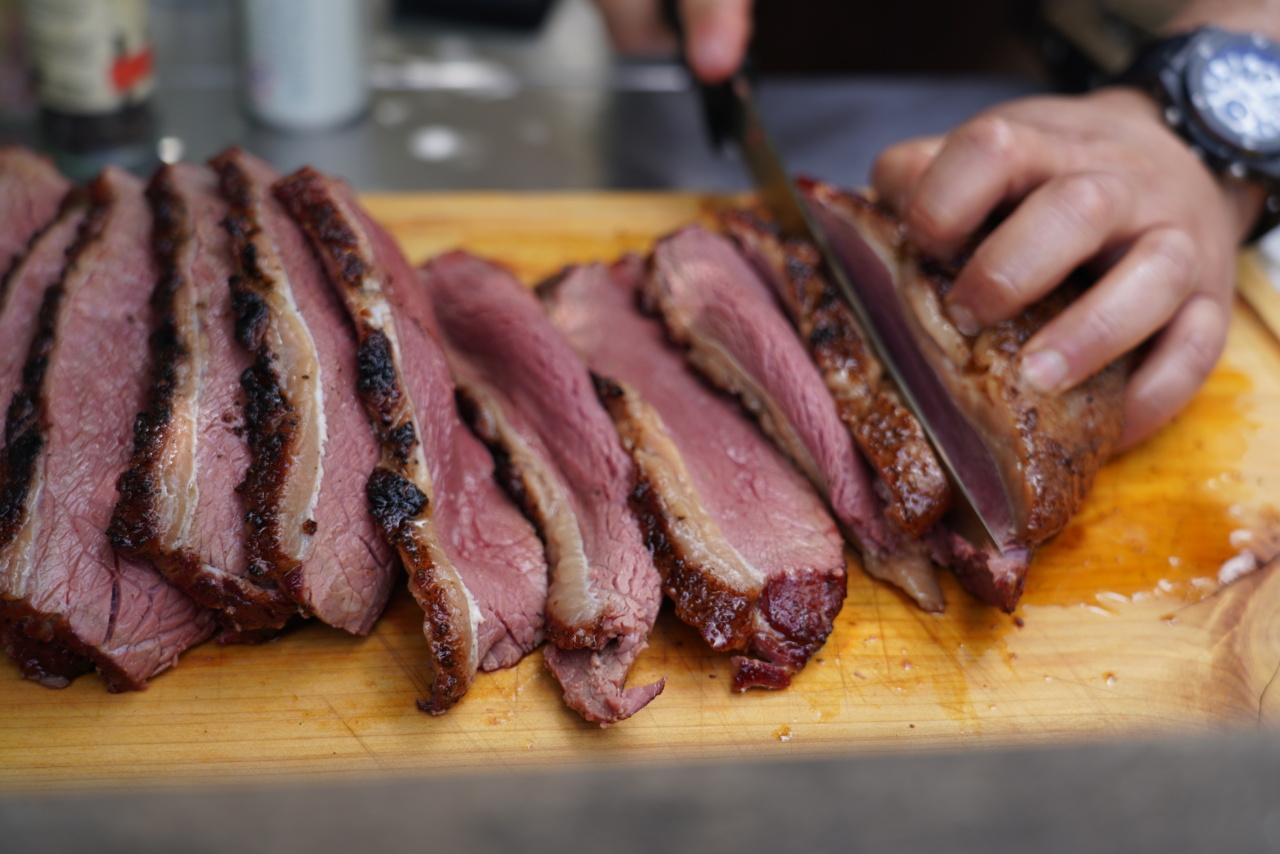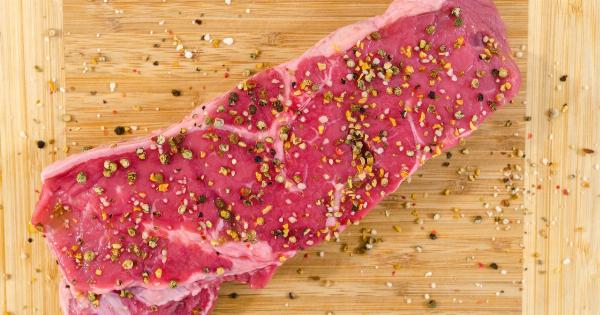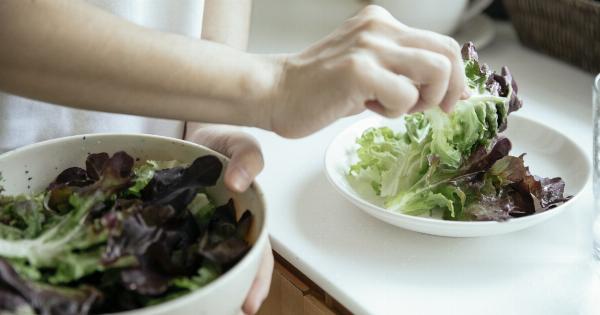There’s nothing quite like sinking your teeth into a perfectly cooked steak. Juicy, tender, and bursting with flavor, steak is a favorite indulgence for many.
However, achieving that ideal steak consistency and taste can be challenging without the right knowledge and techniques. In this comprehensive guide, we’ll reveal the secrets to cooking red meat so you can elevate your steak game to new heights.
1. Choosing the Right Cut
One of the first and most crucial steps to cooking a delicious steak is selecting the right cut. Different cuts offer unique flavors, textures, and tenderness levels. Here are a few popular cuts to consider:.
- Ribeye: Known for its rich marbling and excellent flavor, ribeye is a top choice for steak lovers.
- Sirloin: This cut is leaner but still offers great tenderness and flavor.
- Filet Mignon: Famous for its tenderness, filet mignon is more expensive but worth the splurge for a special occasion.
- NY Strip: Also known as strip steak, this cut is a balance between tenderness and flavor.
Consider your personal preferences when it comes to texture and flavor, and choose a cut that aligns with them.
2. The Importance of Temperature
Understanding the impact of temperature is vital for cooking steak to perfection. Temperature affects how well the meat cooks, its tenderness, and the distribution of juices. Here are some key temperature-related aspects to consider:.
- Room Temperature: Always allow your steak to come to room temperature before cooking. This helps to ensure even cooking.
- Internal Temperature: Invest in a reliable meat thermometer to accurately measure the internal temperature. This allows you to achieve the desired level of doneness, whether it’s rare, medium-rare, medium, or well-done.
- Resting Temperature: After cooking, let your steak rest at room temperature for a few minutes before slicing. This allows the juices to redistribute and ensures a moist, flavorful result.
3. Seasoning and Flavor Enhancement
Seasoning plays a crucial role in enhancing the natural flavors of the steak. While a simple sprinkle of salt and pepper can work wonders, don’t shy away from experimenting with other seasonings and marinades for added complexity.
Consider the following tips:.
- Marinades: Marinating your steak can add flavor and tenderize the meat. Experiment with combinations of herbs, spices, oils, and acidic elements like citrus juice or vinegar.
- Dry Rubs: Dry rubs can add a fantastic crust and flavor to your steak. Customize your rub with a blend of spices, herbs, sugar, salt, and other ingredients of your choice.
- Infused Butters: Elevate your steak by topping it with flavored butter. Create your own unique butter concoctions by incorporating herbs, garlic, or even blue cheese.
4. Mastering Cooking Techniques
The cooking technique you choose can greatly influence the taste and texture of your steak. Here are a few popular techniques to try:.
- Grilling: Grilling is a classic method that imparts delicious smoky flavors. Sear the steak over high heat and then move it to indirect heat for even cooking.
- Marinating: Marinating works well with less tender cuts. It helps tenderize the meat and adds additional flavors.
- Sous Vide: Sous vide is a precise low-temperature cooking method that results in tender and evenly cooked steak. Seal the steak in a bag and cook it in a water bath using a sous vide machine.
- Reverse Searing: Reverse searing involves slow cooking the steak first and then searing it in a hot pan or on the grill. This technique ensures a uniformly cooked interior and a perfectly seared crust.
- Broiling: Broiling involves cooking the steak under intense direct heat. It’s a quick cooking method that creates a delicious charred exterior.
- Cast Iron Skillet: Searing your steak in a cast iron skillet allows for excellent browning and caramelization. Finish it in the oven for even cooking.
5. Resting and Carving
Once your steak is cooked to perfection, it is crucial to let it rest properly before diving in. Resting allows the juices to redistribute, resulting in a juicier and more flavorful steak. Follow these steps:.
- Transfer: Remove the steak from the heat source and transfer it to a cutting board or a plate.
- Tent: Tent the steak loosely with aluminum foil to keep it warm while it rests.
- Rest: Let the steak rest for at least 5 minutes, allowing the juices to redistribute.
- Carve: Use a sharp knife to carve the steak against the grain. This ensures each slice is tender and easy to chew.
6. Exploring Different Cuts of Steak
Understanding the different cuts of steak can empower you to choose the perfect one for any occasion. Here are a few more popular cuts to explore:.
- T-Bone: This cut features a T-shaped bone, with one side being strip steak and the other side being tenderloin.
- Porterhouse: Similar to T-bone, porterhouse has a larger portion of tenderloin, making it a hearty option.
- Flat Iron: This cut is known for its tenderness and affordability. It’s great for grilling and requires minimal effort to cook well.
- Hanger Steak: Hanger steak is prized for its rich, beefy flavor. It’s best cooked medium-rare and works well in various recipes.
7. Tenderizing Techniques
Not all steaks are equally tender, but you can employ various techniques to enhance tenderness:.
- Marinades: As mentioned earlier, marinating can help break down tougher muscle fibers and improve the overall tenderness.
- Dry Aging: Dry aging involves leaving the meat to rest in a controlled environment for an extended period. This enhances the natural enzymes and intensifies the flavor.
- Sous Vide: Sous vide cooking results in tender meat, as the low and precise temperatures break down collagen without overcooking the steak.
8. The Art of Dry Aging
Dry aging is a process used to intensify the flavor and tenderness of steak. Here’s how it works:.
- Find the Right Conditions: Dry aging requires a temperature-controlled environment with good airflow to prevent spoilage.
- Patience: Depending on the desired flavor, the aging process can last from a few weeks to several months.
- Trimming: Once the desired aging period is complete, trim off the dry, hard outer layer before cooking the steak.
9. Accompaniments and Side Dishes
No steak experience is complete without carefully selected accompaniments and side dishes. Consider these classics:.
- Mashed Potatoes: Creamy and buttery mashed potatoes complement the richness of a perfectly cooked steak.
- Grilled Vegetables: Charred and smoky grilled vegetables, such as asparagus, zucchini, or bell peppers, add freshness to your plate.
- Creamed Spinach: Velvety creamed spinach is a classic steakhouse side dish that provides a delightful contrast to the meat.
- Mushroom Sauce: A savory mushroom sauce can elevate the flavors of the steak, adding earthy notes.
10. Perfecting the Steakhouse Experience at Home
Transform your home kitchen into a steakhouse haven with these additional tips:.
- Preheating: Ensure your grill, skillet, or oven is properly preheated to achieve optimal searing and cooking.
- Use a Meat Thermometer: To ensure accuracy and consistency, invest in a good-quality meat thermometer.
- Experiment: Don’t be afraid to experiment with different cuts, seasonings, and cooking techniques until you find your perfect steak.
- Quality Ingredients: Start with the best quality steak you can afford to achieve the best flavor and tenderness.
With these steak secrets and insider tips, you’re well-equipped to cook the perfect steak every time.
Whether you prefer grilling, sous vide, or broiling, applying these techniques will elevate your steak-cooking game and impress your friends and family with mouthwatering results.






























